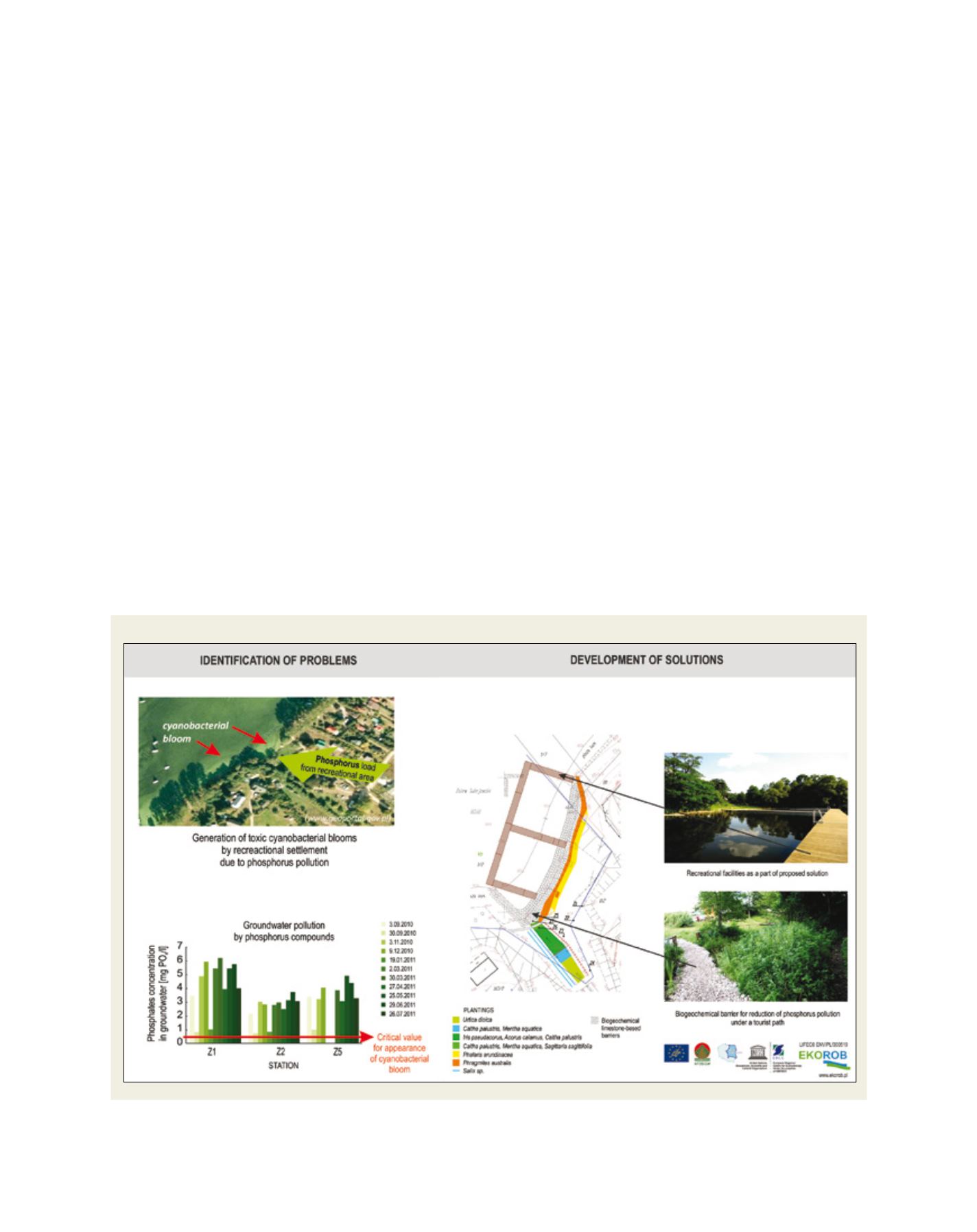

[
] 301
I
nternational
C
ooperation
on
W
ater
S
ciences
and
R
esearch
that triggers the formation of cyanobacterial bloom. Due to the high
concentration of phosphate in the groundwater and seepage water,
a limestone-based biogeochemical barrier was constructed to reduce
phosphorus levels through absorption and precipitation. Preliminary
results indicate that phosphate concentration in the groundwater was
reduced by 58 per cent after it flowed through the barrier.
The shoreline is intensively used for recreational purposes, and
the lack of tourist infrastructure in the sites contributes to devasta-
tion of the vegetation buffer zones. Following the ecohydrological
aim of harmonizing society’s needs with the enhanced ecosystem
potential,
17
restoration of the mosaic ecotone zones was combined
with the construction of recreational infrastructures, such as jetties
for fishing and boating.
Individual ecohydrological methods can be synergistically linked into
the system solutions to complement existing hydrotechnical solutions
for water resources management, contributing to enhancement of the
overall resilience of a catchment and its ability to provide ecosystem
services. The action plan to reduce diffuse pollution in the Pilica River
basin has been developed in cooperation with the Regional Water
Management Authority in Warsaw, which is responsible for water
management of the Vistula River catchment and for the implementa-
tion of European Commission water directives.
Stakeholders (regional authorities, local authorities, non-govern-
mental organizations (NGOs), universities etc) were identified and
integrated through a multi-stakeholder platform which helps to
create an independent space for discussion and exchange of experi-
ence and knowledge. Additionally, measures have been organized to
raise ecological awareness among the local community
and decision makers concerning the prevention of diffuse
agricultural pollution. Public meetings for local people,
educational activities for schoolchildren and training for
specialists, decision makers and teachers have been held.
Blue-green city: urban ecohydrology
The increasing global rate of urbanization and concurrent
global climate changes create new challenges, but also
stimulate new approaches to the management of cities.
18
Achieving sustainable development under increasing
global pressures will depend to a great extent on how
cities manage their natural and water resources. A key
challenge is insufficient space for water circulation in the
city landscape, due to uncontrolled or out-of-date urban
development schemes. Rapid, damaging flash floods
followed by long-lasting dryness, the formation of urban
heat islands and the lowering of air humidity are some of
the major consequences, contributing to higher incidence
of asthma and allergies in city dwellers.
19
This negative
tendency can be reversed by changing the paradigm for the
management of stormwater, which is the only renewable
source of water for cities. This valuable resource should be
consciously retained in city landscapes by rehabilitating
their blue and green infrastructure.
A functional approach towards achieving this goal, by
including urban ecosystems in holistic water manage-
Reducing phosphorus pollution by enhancing plant buffer zones with biogeochemical barriers: LIFE+ EKOROB project Zarz
ę
cin demo site
Source: Izydorczyk K. 2013. ‘Chemical barrier for enhancement of buffer zone toward reduction of diffuse pollution by phosphorus - preliminary results’.
Ecohydrol. &
Hydrobiol.
Article in press


















